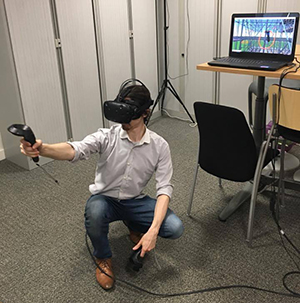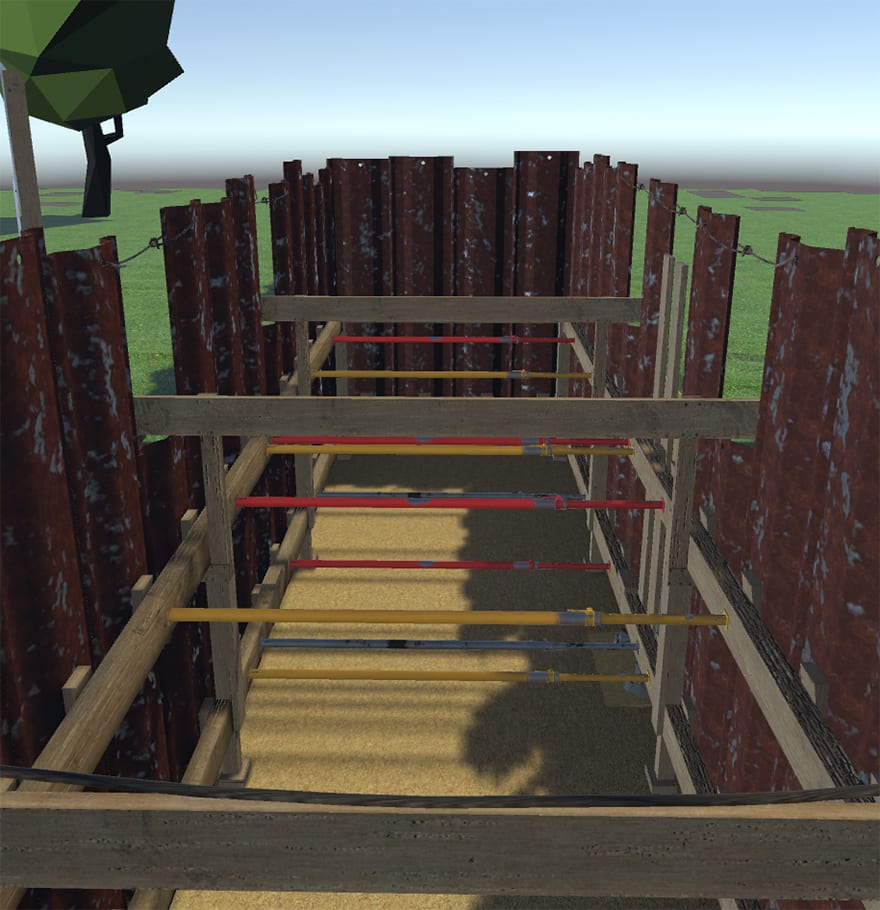Skanska is using “room-scale” virtual reality to train its temporary works supervisors and coordinators in a safe and flexible environment.
The training programme simulates six different temporary works set ups, including a large cofferdam excavation fortified with steel props and sheet piles, and falsework scaffolding designed to support wet concrete.
Trainees wearing HTC Vive headsets are immersed in a 1:1 scale environment and interact with virtual structures using handheld controllers, taking measurements, checking specifications and inspecting connections.
The system is able to simulate dangerous scenarios not possible at the company’s real physical training ground, in Norfolk, explains Matt Parker, senior temporary works engineer at Skanska: “It enables us to build in faults not possible in reality that could literally kill you. The concept is to expose trainees to hazards in a safe environment, which enhances the learning potential.”

The contractor has run five courses since the it launched last year, each with around 12 delegates ranging from new graduate engineers to more experienced foremen.
The technology makes use of HTC’s “room-scale VR” technology that enables users to walk around a real room, their movements monitored by sensors, as they navigate the virtual world, to enhance the sense of being immersed in the environment. If users move to close to a real wall it appears as an illuminated grid in the headset display to prevent a collision.
“Generally feedback has been very good, the VR is quite intuitive, there is no lag, I find I quickly forget where the door to the real room is, you are completely immersed,” says Parker.
Skanska sees the headset solution as a more convenient and portable method of delivering training – all that is required is a laptop and an empty hotel room. Rather than requiring all trainees to go to a single site, it can take the system direct to them, almost anywhere in the country.
Jake Sharp, visualisation specialist at Skanska, comments: “The virtual approach saves time and money, it makes training safer and we can create bespoke scenarios for almost anything we want. Where before we had three set-ups, now we have six bespoke to each department’s needs.”

A head height view as if you’re stood looking into the trench
Looking ahead, Skanska plans to launch VR training to help familiarize workers with working in and around heavy plant and machinery, later on this year.
VR training for electrical engineers who work in high-risk environments with live equipment, switching, isolating and testing equipment is planned for a later date.
Dylan Roberts, director of health, safety and wellbeing at Skanska, says: “VR puts you in a very different mindset so you are immersed in a situation, which is very difficult to recreate on site because it would be so disruptive. It can recreate unsafe situations in a virtual world that do not pose a threat to individuals.
“We’re seeing a huge amount of opportunity with the technology, but we are just starting on this journey.”
VR puts you in a very different mindset so you are immersed in a situation, which is very difficult to recreate on site because it would be so disruptive. It can recreate unsafe situations in a virtual world that do not pose a threat to individuals.– Dylan Roberts, Skanska













